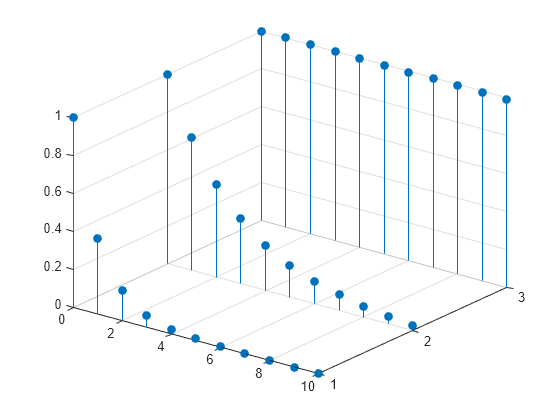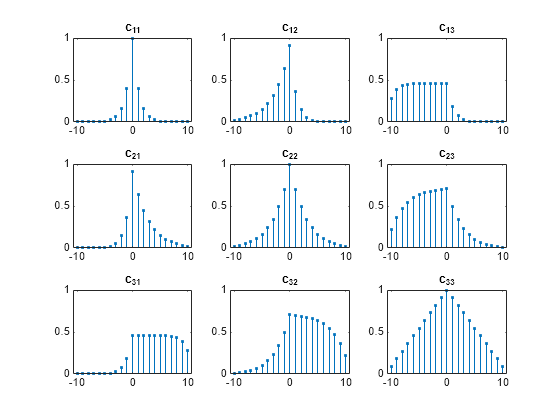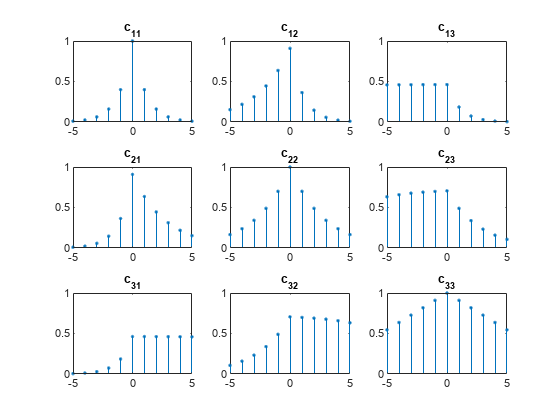多通道输入的互相关
生成三个包含 11 个样本的指数序列,这些样本由 、 和 () 给出。使用 stem3 并排绘制这些序列。
N = 11;
n = (0:N-1)';
a = 0.4;
b = 0.7;
c = 0.999;
xabc = [a.^n b.^n c.^n];
stem3(n,1:3,xabc','filled')
ax = gca;
ax.YTick = 1:3;
view(37.5,30)
计算这些序列的自相关和互相关。输出滞后,这样您就不必跟踪它们。将结果归一化,使自相关在零滞后处具有单位值。
[cr,lgs] = xcorr(xabc,'coeff'); for row = 1:3 for col = 1:3 nm = 3*(row-1)+col; subplot(3,3,nm) stem(lgs,cr(:,nm),'.') title(sprintf('c_{%d%d}',row,col)) ylim([0 1]) end end

仅计算滞后值为 和 之间时的相关性。
[cr,lgs] = xcorr(xabc,5,'coeff'); for row = 1:3 for col = 1:3 nm = 3*(row-1)+col; subplot(3,3,nm) stem(lgs,cr(:,nm),'.') title(sprintf('c_{%d%d}',row,col)) ylim([0 1]) end end

计算自相关和互相关性无偏估计。默认情况下,滞后介于 和 之间。
cu = xcorr(xabc,'unbiased'); for row = 1:3 for col = 1:3 nm = 3*(row-1)+col; subplot(3,3,nm) stem(-(N-1):(N-1),cu(:,nm),'.') title(sprintf('c_{%d%d}',row,col)) end end
